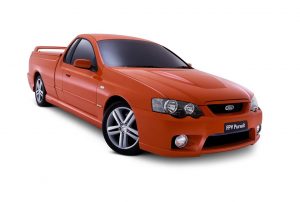Recalls: FPV BA Pursuit
Overview
Manufacturers, or importers, issue recalls for defects or faults which have the potential to cause injury. Generally, manufacturers will inform the original buyers if their vehicle is subject to a recall and of the steps required to remedy the defect or fault. Please note that the recalls below (if any) are for Australian-delivered vehicles only. Furthermore, the number of recalls should not be taken as an indication of a model’s reliability or its safety more generally.
Recalls:
No recall information is available for the FPV BA Pursuit. To search for recalls of Ford models, please visit Product Safety Recalls Australia: Ford.
Problems and faults: FPV BA Pursuit
Overview
This section identifies potential problems, causes and fixes based on the experiences of owners and repairers, online sources and technical service bulletins. This information is provided solely for reference purposes and AustralianCar.Reviews recommends that only properly qualified persons carry out repairs or modifications. Furthermore, the number of items below should not be taken as an indicator of a model’s reliability or the frequency with which they may occur.
To report a problem or fault to the AustralianCar.Reviews team, please use the Contact Us form. Note that AustralianCar.Reviews does not offer advice on automotive problems or disputes; such enquiries will not receive a reply. For vehicles purchased from dealers after 1 January 2011, please see our Australian Consumer Law fact sheet.
Boss 290 V8 engine: chain tensioners and rattling on start-up
The Boss 290 V8 engine was initially fitted with plastic chain tensioners. Over time, the plastic chain tensioners would wear out and lose tension, causing a rattling noise on start-up (see video below) and oil to drain out. It is understood that metal chain tensioners were introduced late in the production of the FPV BA Mk II.
Boss 290 V8 engine: oil consumption
For the FPV BA.I GT, the Boss 290 V8 engine had excessively hard piston rings which, combined with a ‘light run-in process’, resulted in cylinder bore glazing (whereby the piston rings did not develop effective seals) and high oil consumption which persisted for the life of the engine. In part, however, the high oil consumption was also due to the Boss 290 V8 engine being filled with synthetic engine oil from the factory; for the BA.II GT, the engine was filled with Castrol 15W-40 Protec mineral oil (also marketed as Castrol GTX3).
Engines
- A rattling noise at idle may be due to a loose exhaust heat shield.
- The radiator was susceptible to leaking.
- The O-ring seal at the back of the water pump was susceptible to leaking.
- Low idle, stall or variable idle: for Ford’s BA/BF vehicles, engine speed may drop below the normal idle speed – the engine may then either stall or the ECU may intervene to raise engine speed, causing a variable idle. Ford Australia issued a service bulletin (TSB 20/05) regarding this problem recommending that the throttle body be cleaned and the ECU re-flashed.
- Knocking noises from the engine bay which are loudest near the glovebox may be due to the vacuum hoses vibrating against the body or other components – this can be fixed with a cable-tie.
Transmissions
- Four-speed BTR automatic transmission: the transmission cooler was located in the radiator and the cooling lines were susceptible to failure due to age, wear or corrosion. If this occurred, the fluid in the coolant reservoir would appear milky (hence the term ‘milkshake’) and damage to the transmission would require it to be rebuilt or replaced. To prevent contamination of the transmission fluid with coolant, a common modification was to fit an external air/oil transmission cooling kit which bypassed (and sealed) the cooler in the radiator.
- Difficulty selecting gears may be due to a loose gear selector linkage/mechanism.
Steering shudder
In December 2004, Ford Australia issued a technical service bulletin (TSB 98R/04) for Ford BA vehicles with six-cylinder engines due to fluid pulsations in the power steering system causing the steering wheel to shudder – this generally occurred during low speed manoeuvres like parking. To fix, the power steering system was to be bled; if that did not fix the problem, a new high-pressure power steering hose was to be fitted and the system bled.
Rear brake hose service campaign
In May 2007, Ford Australia initiated a ‘service campaign’ to replace the rear brake hoses of 200,000 Ford BA/BF vehicles that were produced from September 2002 to March 2007. In these vehicles, the rear brake hoses were susceptible to excessive wear and could leak. At worst, however, the hoses could rupture. According to Ford, the driver would generally experience reduced braking effectiveness and a warning light would illuminate in the instrument cluster to warn the driver. As part of the service campaign, the brake hoses were replaced during regular servicing performed by Ford dealers.
Brakes
- The ABS light may illuminate intermittently due to problems with the ABS sensors – this may be fixed by cleaning or replacing the sensors.
Suspension
- Knocking noises from front suspension may be due to worn lower ball joints.
- Clunking noises from the rear of the vehicle – particularly at low speeds – may indicate that the differential bushes require replacement.
- Knocking noises from the rear suspension when driving over bumps may indicate that the upper shock bushes require replacement.
Problems and faults:
- A malfunctioning body computer may turn on the interior lights and drain the battery; if so, the computer needs to be reset.
- Problems with the door locks are usually due to the actuators failing.
- Low battery voltage can make the gearshift indicators flash and the transmission enter ‘limp home’ mode, requiring the battery to be replaced.




